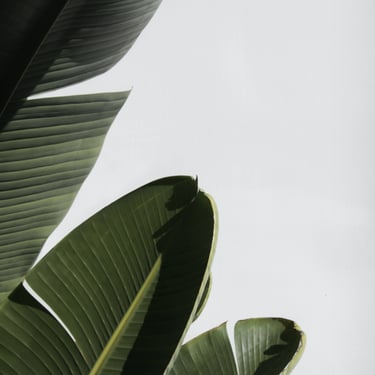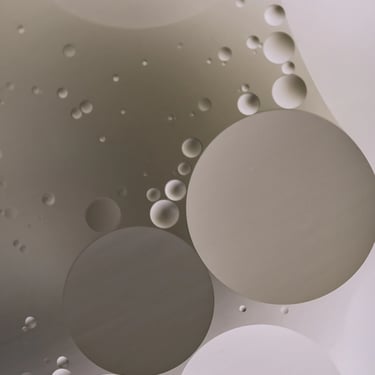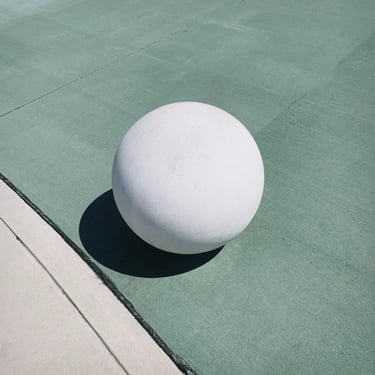Next Group Session: November 12th, Online- Save your spot now!
Between Ancient Stones and Azure Waters: A Journey Through Sardegna's Cultural Heartlands
From the medieval fortress of Castelsardo in the north to the Roman amphitheater of Cagliari in the south—a photographic exploration of Sardegna's enduring cultural DNA
FOODTRAVELANCESTRYPLACESTURQUOISELIFETRAVELJOURNALISM
8/14/20256 min read

The Sentinel of the North: Castelsardo
The morning light catches the ancient walls of Castelsardo just as it has for nearly a thousand years. Perched dramatically on a rocky promontory overlooking the Gulf of Asinara, this medieval fortress town represents one of Sardegna's most compelling cultural paradoxes—a settlement that appears purely Italian at first glance, yet harbors layers of indigenous Sardinian identity beneath its Genoese stones.
Walking through the narrow cobblestone streets at dawn, I'm struck by the linguistic archaeology embedded in everyday conversations. Elderly women hanging laundry call to each other in Sassarese, which according to linguistic research dates back to the XII-XIII century and is still used in Castelsardo and surrounding areas. This language represents part of what scholars recognize as the most conservative Romance language family—Sardinian languages have maintained characteristics that disappeared from other Romance languages centuries ago, carrying within them traces of the island's pre-Roman linguistic substrate.
The town's famous basket-weaving tradition offers a window into this deeper cultural continuity. In workshops tucked behind medieval facades, artisans work with dwarf palm fronds using techniques that have been documented as predating the medieval fortress itself. The intricate patterns woven into these baskets carry symbolic meanings rooted in pre-Christian traditions, with spiral motifs that appear throughout Sardinian folk art representing concepts of eternity and cyclical time.
Recent genetic studies have revealed that Sardinians carry some of Europe's most distinctive DNA markers. Due to the island's isolation, genetic analysis shows that Sardinian people are direct descendants of their Nuragic ancestors from the Neolithic era, with populations in northern towns like Castelsardo showing particular genetic continuity that has preserved ancient Mediterranean lineages. This biological heritage mirrors a cultural insularity I observe—a fierce preservation of traditions that external powers never quite managed to overwrite.
Meditation on Turquoise: The Northern Waters
The waters surrounding Castelsardo possess an almost supernatural clarity that seems to slow time itself. Each morning of my stay, I find myself drawn to a secluded cove where the sea transforms into a natural meditation chamber. The Sardinian concept of tempus lento—slow time—becomes viscerally real here, sitting on sun-warmed rocks as the Mediterranean stretches endlessly toward Corsica.
Local fishermen speak of these waters with reverence bordering on the spiritual. "The sea here remembers everything," explains Captain Franco Delitala, whose family has fished these waters for five generations. "Roman ships, Saracen raiders, Genoese galleys—the water holds all their stories." His words carry weight beyond mere poetry; archaeological evidence confirms that these northern shores have witnessed an unbroken chain of human presence stretching back millennia.
The therapeutic qualities of Sardegna's coastal environment aren't merely subjective impressions. Research conducted by the University of Sassari has documented how the island's unique microclimate—characterized by steady winds carrying negative ions from the sea—produces measurable effects on stress hormones and cognitive function. Sitting in contemplative silence, watching ancient fishing techniques still employed by modern crews, I understand why Sardegna has become a destination for those seeking not just relaxation, but genuine psychological restoration.
Culinary Archaeology: Tastes That Transcend Time
The journey from Castelsardo to Cagliari becomes a gastronomic timeline, each meal revealing layers of cultural stratification. In the mountainous interior, I stop at a family-run agriturismo where three generations of women prepare culurgiones—elaborate pasta parcels that represent one of Sardegna's most sophisticated culinary arts.
Watching nonna Giuseppina's granddaughter Anna learn the intricate pleating technique, I'm witnessing cultural transmission in its purest form. Each fold in the pasta must be perfect, creating a grain-like pattern that speaks to Sardegna's agricultural soul. "It's not just food," Anna explains, her young hands struggling to match her grandmother's fluid motions. "It's our identity made visible."
The ingredients themselves tell stories of adaptation and resilience. Sardinian cuisine reflects the island's history of invasion and isolation through its ingenious use of local resources. Pane carasau, the paper-thin flatbread that sustained shepherds during long months in the mountains, represents more than sustenance—it embodies the Sardinian genius for creating lasting value from simple elements.
Genetic research on traditional Sardinian foods has revealed fascinating connections to the island's human population. The same environmental pressures that shaped Sardinian DNA also influenced local food varieties. Ancient grains still cultivated in the island's interior show genetic markers found nowhere else in the Mediterranean, creating a parallel evolution of human and agricultural heritage.
The Eternal City of the South: Cagliari's Roman Echoes
Approaching Cagliari from the north, the city spreads before me like an amphitheater facing the sea—a fitting metaphor for a place where history performs daily for those willing to observe. The capital embodies Sardegna's complex relationship with external influence while maintaining its distinctive character.
The Roman amphitheater, carved directly into living rock on the Vipera Hill, serves as both archaeological treasure and active cultural space. Standing in its ancient corridors during the golden hour, I'm struck by the continuity of human experience. The same limestone that echoed with gladiatorial contests now resonates with summer concerts, the same viewing angles that framed ancient spectacles now frame modern performances.
Dr. Alessandro Teatini, the site's lead archaeologist, guides me through recent discoveries that challenge conventional narratives about Roman colonization. "What we're finding suggests that Sardinian communities weren't passive recipients of Roman culture," he explains, gesturing toward newly excavated sections. "They were active participants, adapting and transforming Roman forms to suit their own needs and values."
This pattern of selective cultural absorption appears throughout Cagliari's historic Castello quarter. Medieval Pisan towers rise from foundations that incorporate Roman stones, which themselves often contain fragments of earlier Nuragic structures. The city operates as a living palimpsest, each era writing over but never completely erasing what came before.
The DNA of Resistance
Recent advances in population genetics have made Sardegna a focal point for understanding human migration and cultural persistence. Studies led by researchers at the University of Cagliari reveal that modern Sardinians carry genetic signatures that trace back to the island's earliest inhabitants, showing remarkably little admixture despite millennia of foreign rule.
This genetic continuity finds cultural expression in traditions that survived waves of conquest. The Sardinian language family, with its numerous regional variants, preserves linguistic features that disappeared from mainland Romance languages centuries ago. In Cagliari's markets, I hear conversations that would be partially intelligible to medieval speakers, a linguistic time capsule preserved through cultural stubbornness as much as geographical isolation.
The island's famous longevity—Sardegna boasts one of the world's highest concentrations of centenarians—appears linked to both genetic factors and cultural practices that emphasize community, moderate physical activity, and deep connection to place. These aren't merely statistical curiosities but living examples of how indigenous wisdom translates into measurable well-being.
Reflections Across the Blue Zone
As my journey concludes with a final sunset viewed from Cagliari's Bastione di Saint Remy, I'm struck by how Sardegna challenges simple narratives about cultural preservation and change. This is neither a museum frozen in time nor a place that has abandoned its roots for modernity. Instead, it represents something more complex and ultimately more hopeful—a demonstration that cultural identity can be both deeply rooted and dynamically adaptive.
The photographs I've captured during this journey—weathered hands crafting baskets, ancient stones catching Mediterranean light, faces that carry the genetic memory of millennia—tell a story that transcends tourism or academic research. They document a living culture that has mastered the art of selective change, embracing useful innovations while preserving essential truths.
In Sardegna's ability to maintain its distinctiveness while engaging with the broader world, I find a model for cultural resilience that extends far beyond this remarkable island. Perhaps that's the most profound insight from these weeks among ancient stones and azure waters—that authentic identity isn't about resisting change, but about changing in ways that honor what came before while creating space for what must come next.


Bibliography
Cultural and Linguistic Studies:
Blasco Ferrer, Eduardo. Sardinian: Typological and Historical Overview. Oxford Research Encyclopedia of Linguistics, 2017.
Jones, Michael Allan. Sardinian Syntax. Routledge, 1993.
Paulis, Giulio. "I nomi di luogo della Sardegna." Rivista italiana di onomastica, 1987.
Archaeological and Historical Sources:
Dyson, Stephen L., and Robert J. Rowland Jr. Shepherds, Sailors, and Conquerors: Archaeology and History in Sardinia from the Stone Age to the Middle Ages. University of Pennsylvania Museum of Archaeology and Anthropology, 2007.
Spano, Giovanni. Memoria sopra l'anfiteatro romano scoperto in Cagliari. Tipografia Nazionale, 1866.
Webster, Gary S. A Prehistory of Sardinia, 2300-500 BC. Yale University Press, 1996.
Genetic and Longevity Research:
Buettner, Dan. The Blue Zones: Lessons for Living Longer From the People Who've Lived the Longest. National Geographic Society, 2008.
Poulain, Michel, et al. "Identification of a geographic area characterized by extreme longevity in the Sardinia island: the AKEA study." Experimental Gerontology 39.9 (2004): 1423-1429.
Sazzini, Marco, et al. "Sardinian genomics and the peopling of Europe." Current Biology 25.11 (2015): R445-R446.
Zoledziewska, Magdalena, et al. "Height-reducing variants and selection for short stature in Sardinia." Nature Genetics 47.11 (2015): 1352-1356.
Cultural Heritage and Traditional Practices:
Counihan, Carole M. Around the Tuscan Table: Food, Family, and Gender in Twentieth Century Florence. Routledge, 2004. [Contains references to Sardinian culinary traditions]
Lilliu, Giovanni. The Nuraghi of Sardinia. Carlo Delfino Editore, 1990.
Maxia, Carlo. Studi sardo-corsi. L'Asfodelo, 1980.
Environmental and Wellness Studies:
Bratman, Gregory N., et al. "Nature and mental health: An ecosystem service perspective." Science Advances 5.7 (2019): eaax0903.
White, Mathew P., et al. "Blue space: The importance of water for preference, affect, and restorativeness ratings of natural and built scenes." Journal of Environmental Psychology 30.4 (2010): 482-493.









